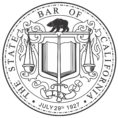Understanding Product Liability: When Defective Products Cause Harm

People buy products expecting them to be in functioning and safe condition. In fact, consumers are usually shocked when a defective product hurts someone. In some cases, the harm caused by a defective product may result in severe or even fatal injuries.
If you or your loved one has recently been injured by a defective product, know that the law in California entitles you to file a product liability lawsuit and pursue compensation for damages. But is the manufacturer of the defective product always liable for compensation, or could there be another potentially liable party?
Product Liability Law
Product liability comes under the umbrella of personal injury law. Specifically, product liability law obligates manufacturers and vendors to ensure that any products are in a safe condition when they leave the factory or the store.
If there is a potential risk of injury, vendors are obligated to provide a warning to consumers. Product liability law covers all types of products.
Some of the most common types of products that have a history of potentially having a defect include the following:
- Auto parts
- Household appliances
- Toys
- Sports equipment
- Medical devices
- Cosmetics
- Cleaning products
- Over-the-counter and prescription medicines
- Food products
- Lawn care products
- Machinery
Potentially Liable Parties
Product liability claims are filed more often than most people may realize. According to one source, there were more than 5,800 product liability cases in just 1 year across the nation.
Typically, in a product liability claim, there are three potentially liable parties that can be pursued for compensation for damages. These parties are the designer, the manufacturer, and the marketer. Any one of these parties, or perhaps more than one, could be held liable for damages from a defective product.
The designer
In some cases, there may be a flaw in the product’s design.
Some examples of design defects include:
- Car airbags that explode unexpectedly
- Toys that are a choking hazard for small children
- Power tools with faulty safety switches
- Medicines that have an extremely high risk of life-changing or fatal side effects
In cases of design defects, the designer of the product may be found liable for compensation. Perhaps there was a way to adjust the design to remove the potential hazard. Or maybe there was a failure to perform a complete and thorough test of the product in an effort to discover any potential problems.
If an investigation reveals that the designer was negligent in performing safety measures, then he or she would be found at fault for injuries that resulted from the defect. A product must be in a safe condition when it leaves the control of the designer.
The manufacturer
There are times when the product may have been designed and adequately tested to ensure safe usage for consumers, but a defect may have occurred during the production phase. When this is the case, then the manufacturer could be the party responsible for the personal injury.
Some examples of negligence during the manufacturing process include cases where the product was improperly assembled, assembled with the wrong materials, or the product was defective and not caught before it went to market.
Worst still, sometimes a manufacturer will deliberately swap quality materials for inferior ones, thinking this might save the company money. If any such issues or manufacturing defects occur during the production stage, then the victim could pursue a product liability claim against the manufacturer.
In most cases, it may be just a few defective products out of the many that leave the assembly line. But even just one or two manufacturing defects can leave victims with severe life-changing injuries.
The marketer
If the product was designed properly and yet there was a failure to provide a warning to consumers, then the marketer or seller could be found liable. The law obligates a marketer to provide detailed and easy-to-read warnings of any potential hazards, in addition to instructions on use.
Consumers should be able to make an informed decision on the products they purchase. Thus, a warning of any potential risks is vital. An example of this type of warning would be listing serious side effects associated with the use of an over-the-counter or prescription medicine.
In order to receive compensation for damages, the victim must prove that the product had a defect in the design or was in a hazardous condition when it left the control of the manufacturer. If this was not the case, it must be proven that a marketer failed to provide sufficient warnings of the potential risk from the product defects.
Additionally, it must also be clearly established that the victim was directly harmed by his or her use of the defective product. In order to prove these facts, a thorough investigation would need to be performed to gather evidence to substantiate a product liability claim.
This is why it is crucial to have the assistance of a lawyer who is familiar with the legal process of product liability law. Although the victim could try to seek compensation on his or her own, an experienced attorney would know how to gather evidence and hold responsible parties accountable for injuries caused by defective products.
The Law of Comparative Negligence
There is another reason why the assistance of a product liability lawyer would be vital, namely, the rule of comparative negligence. Each state has enacted a legal rule that establishes the amount of compensation a victim can recover for damages based on percentages of fault between the victim and the negligent party. This rule is known as comparative negligence.
There are different types of comparative negligence, namely, “pure,” “modified,” “comparative,” and “contributory.” California follows the rule of pure comparative negligence. This means that even if a victim was mostly at fault for the injury, he or she can still recover damages, but the amount of compensation will be reduced by the victim’s degree of fault.
One example would be a car accident that occurred due to a tire blowout from a design flaw, but the driver was driving at 85 mph in a 55 mph zone. In such a case, the driver could be found mostly at fault but could still recover a smaller measure of damages under the pure comparative negligence rule.
This is why an experienced lawyer would be absolutely crucial to a product liability claim. Even though the victim may still recover compensation, the amount may be drastically reduced if the victim is found to be mostly responsible.
An attorney who is familiar with defective or dangerous products and laws from the U.S. Consumer Product Safety Commission would know how to build a strong case based on the investigation to minimize the amount of blame on the victim.
Speak to Our Product Liability Lawyers Today
Each and every day, we are constantly using products, whether at home or away. If you or your loved one has recently experienced a personal injury that appears to be due to a defective product, speak with a product liability lawyer today. You have the legal right to seek compensation for damages suffered.
While it is true that product liability law obligates manufacturers to ensure that their products are safe for consumer use, these companies have teams of lawyers who know how to discredit a product liability claim.
You need a skillful team of lawyers in your corner, such as the lawyers at Harker Injury Law, who are familiar with tactics used by opposing attorneys and know how to disprove them.
Our personal injury attorneys have decades of experience and are here to fight for you. So get your product liability claim in good hands with an attorney before it’s too late. Contact us today for a free consultation with an experienced product liability attorney.










